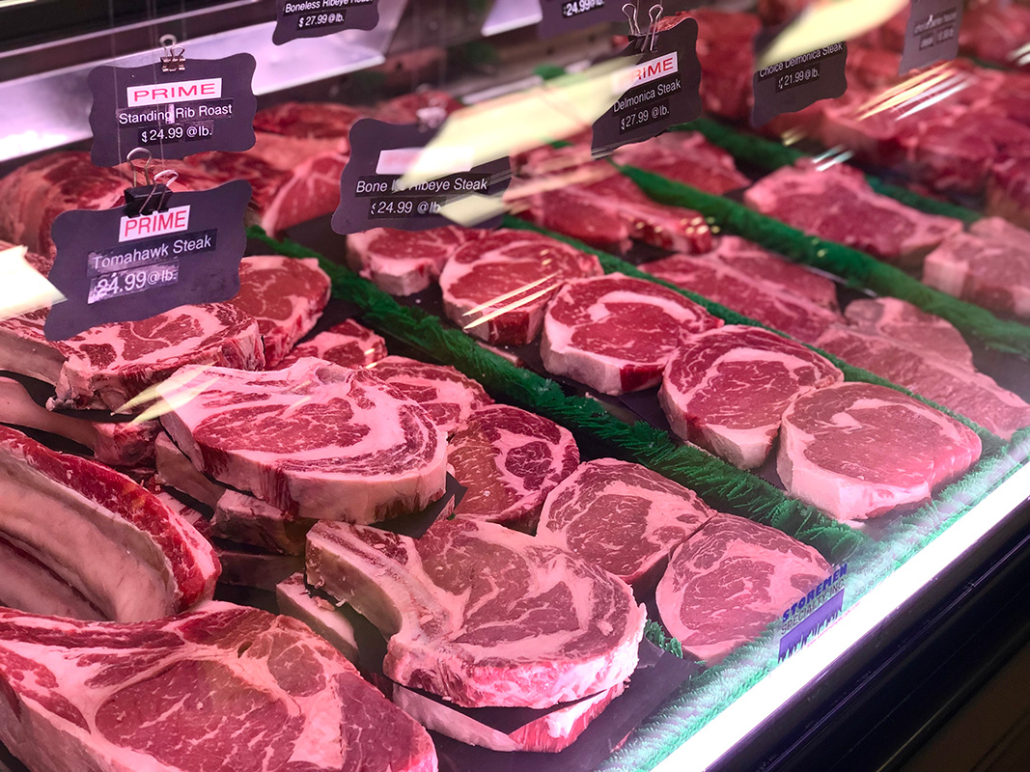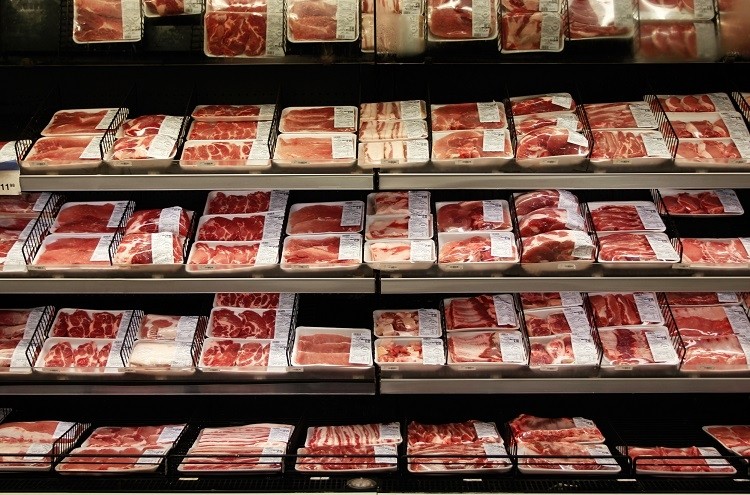Bagley Farms Meat Market Edwardsville IL: Your Trusted Resource for High-Quality Meats
Bagley Farms Meat Market Edwardsville IL: Your Trusted Resource for High-Quality Meats
Blog Article
Reveal the Art of the Butcher's Cut in a Modern Meat Market
In the ever-evolving landscape of modern meat markets, the butcher's cut has transcended its conventional origins, merging olden workmanship with contemporary techniques. What truly establishes the contemporary butcher apart is their capability to forge a deeper link between consumers and the origins of their meat.
Development of Butchery Methods
The evolution of butchery techniques mirrors a rich tapestry of technology and adaptation driven by innovations in modern technology, modifications in consumer need, and a deeper understanding of meat scientific research. Historically, butchery was a craft passed down with generations, with techniques developed over centuries to take full advantage of yield and flavor. However, the commercial transformation ushered in mechanization, changing standard practices and allowing large processing.
The mid-20th century saw butchery strategies further improved by scientific understandings right into muscle biology and meat aging, boosting both tenderness and preference. Advancements like vacuum cleaner packaging and refrigeration extended item shelf-life, allowing butchers to diversify offerings and boost high quality control. This period additionally marked the surge of specialized tools, such as band saws and meat slicers, which enhanced precision and efficiency in meat handling.

The 21st century has actually introduced digital innovation right into the butchery realm. Electronic systems currently aid in tracking pet provenance and enhancing cuts to satisfy details client choices. Furthermore, a revival in artisanal butchery has arised, mixing conventional skills with modern expertise to accommodate customers seeking honest and lasting meat alternatives. This evolution emphasizes a vibrant interplay between custom and technology, conference contemporary needs while protecting the craft's heritage.
Recognizing Meat Cuts
Comprehending the details of meat cuts is crucial for both butchers and customers seeking quality and worth. Each cut comes from a different component of the pet, passing on unique tastes, structures, and cooking methods - bagley farms meat market edwardsville il. Proficiency of these distinctions not just improves cooking experiences yet additionally makes the most of the utility of each carcass. For butchers, accurate cuts reflect skill and respect for the craft, making certain marginal waste and optimal yield.

Recognizing muscle make-up is vital; muscular tissues made use of more frequently by the pet have a tendency to be tougher and are best matched for sluggish food preparation methods, while less-used muscle mass, like those found in the loin, are extra tender and suitable for grilling or roasting. Knowledge with these differences encourages consumers to make informed choices, enhancing their culinary undertakings.
Picking High Quality Meat
Selecting the best meat entails even more than just choosing an aesthetically attractive item from the display screen. The art of picking top quality meat requires a critical eye and expertise of certain qualities that signify quality and excellence.
Second of all, consider the marbling, which describes the white flecks of fat within the muscle. Appropriate marbling is an essential indicator of tenderness and taste, as it melts throughout cooking, improving the meat's juiciness. Bear in mind, higher marbling commonly associates with superior quality cuts, such as USDA Prime.
Texture is one more important variable; meat must feel solid to the touch, not slimed or excessively soft. Furthermore, be mindful of the aroma. Fresh meat must have a clean, neutral smell, devoid of any type of sour or repulsive odors.
Matching Cuts With Food Preparation Techniques

Alternatively, harder cuts like brisket and chuck roast are rich in collagen, which damages down right into gelatin when cooked slowly. These cuts are ideal for braising or slow roasting, permitting the meat to tenderize in time and establish deep, intricate flavors. Similarly, cuts such as short ribs and pork shoulder prosper with slow-cooking methods, where expanded cooking times transform their durable structures right into delicious meals.
Lamb shanks and oxtail, which require extended cooking to soften, are excellent prospects for cooking or slow-moving simmering. These approaches coax out rich, passionate flavors while preserving moisture. By understanding the distinct attributes of each cut, cooks and home chefs alike can boost their cooking productions, making sure each meal is both satisfying and remarkable.
The Butcher's Role Today
Navigating the advancing landscape of the contemporary meat market, the butcher's duty today extends beyond mere preparation of cuts. Contemporary butchers are culinary craftsmens, educators, and supporters for sustainable techniques. They bridge the void between the farm and the fork by ensuring honest sourcing, recognizing pet husbandry, and focusing on transparency in the supply chain. This shift reflects the growing consumer need for high quality over amount, where provenance and animal welfare are vital.
In addition to crafting precise cuts, butchers currently involve straight with consumers, providing cooking suggestions and tailoring choices to suit private demands and preferences. Their experience in meat aging, marbling, and flavor profiles encourages customers to make enlightened choices, improving their culinary experiences. This personalized solution exhibits the butcher's advancing role as a relied on expert in the kitchen area.
In addition, butchers are pivotal in reducing waste, making use of entire animals to create diverse products such as sausages and stocks. This comprehensive method not only respects the pet however likewise that site aligns with contemporary sustainability goals. In this means, the modern-day butcher personifies both tradition and innovation, adjusting to an ever-changing advice market while maintaining the artistry and honesty of their craft.
Verdict
The contemporary butcher's craft elaborately weaves standard methods with contemporary innovations, emphasizing lasting techniques and moral sourcing. Proficiency in recognizing diverse meat cuts and high quality indicators empowers butchers to provide enlightened suggestions, aligning specific cuts with optimal visit this page food preparation methods. This expertise not just boosts cooking experiences however also strengthens the link in between customers and the origins of their food. By honoring historical methods while accepting modern needs, the butcher's function remains essential in today's advanced meat market (bagley farms meat market edwardsville il).
Report this page